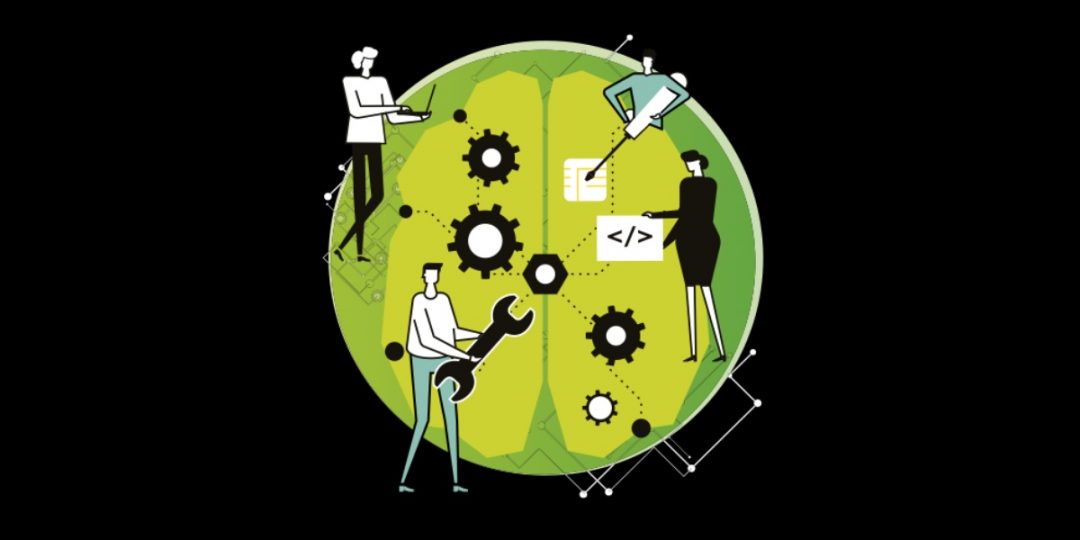We have a new essay published by Deloitte Insights, Negotiating the digital-ready-organisation, a collaboration with Alex Bennett at NTT. This builds on our previous work on the transition to working digitally, Reconstructing the workplace, by trying to imagine what this future workplace might look like.
Continue readingCategory: Work, worker, workplace
Setting the stage for creative performance
We have a new essay published by Deloitte Insights, Setting the stage for creative performance.> This essay is the follow-on to Unshackling the creative business from a couple of months ago.
Continue readingReconstructing the workplace
We have a new essay published on Deloitte Insights, Reconstructing the workplace: The digital-ready organisation. The essay follows on from The digital-ready workplace from last month. (We do seem to be publishing at a surprising rate at the moment.)
Continue readingWhat skills gap?
A lot of angst has been devoted to discussing the skills gap—the large and growing gap between the skills workers hold and those sought by employers. Reports have been written quantifying the skills gap, how it’s a drag on the economy, or estimating just how much the economy might boom if we manage to close it. One estimate has closing the gap as adding US$11.5 trillion to global GDP by 2028.
Think pieces and TED talks promote “the skills you need”. Training schemes and education incentives have been implemented to reskill workers, providing them with new skills, skills more relevant to a digital age. Despite these efforts, the skills gap continues to grow. It’s now ‘catastrophic’, a ‘critical issue’ for educators, employers and government.
The problem is that the more we’re looked into the skills gap, the less we’re convinced that it’s a problem. This isn’t to say that there aren’t challenges we must overcome as we sail into our digital future—it’s just that the skills gap doesn’t seem to be one of them.
Continue readingThe digital-ready workplace
We have a new essay published in Deloitte Insights, The digital-ready workplace: Supercharging digital teams in the future of work, a collaboration with Rosemary Stockdale from Griffith Business School and Tim Patston from UniSA STEM at the University of South Australia.
Most (if not all) research groups have done a survey on the affect working from home has had—this is ours, though it’s ended up in a different place. We start by trying to understand the relative merits of a push or pull approach to support workers during the transition, where push is the usual “give them the tools and training we think they’ll need” while pull is empower and support workers in finding their own tools. Generally, a push approach works well when the challenge is understood beforehand, while a pull approach is better when the challenge is not well understood as it enables workers to adapt. We’d heard anecdotal stories that firms had taken different approaches, and we were wondering how the relative benefits and problems stacked up. What we discovered, once the data started coming in, was that we were asking the wrong question.
Continue readingUnshackling the creative business
We have a new essay published in Deloitte Insights, Unshackling the creative business: Breaking the tradeoff between creativity and efficiency. Creativity is seen as an import capability for an organisation to be successful in today’s volatile, uncertain, complex and ambiguous (VUCA) world. Significant effort has been invested in fostering creativity in business, effort which sadly is often wasted. This essay looks at why this might be the case and what we can do about it.
Continue readingBuilding the peloton
We have a new essay published in Deloitte Insights, Building the peloton: High performance team-building in the future of work. Jess Watson is the lead author of a report that looks into how we need to think a bit differently about teams, team work and leadership as the drive to create more agile organisations breaks down established organisation structures.
The report uses the analogy of a cycling peloton—the team-of-teams that competes and cooperates in a road cycling race—to integrate current research on team formation and operation in a world where firms function as a team-of-teams.
Continue readingDigital agency and the skills gap
The concluding report from Deloitte Centre for the Edge and Geelong Grammar Schooll‘ collaboration looking into digital skills in the workplace, Digital agency and the skills gap, has been published by Deloitte, Australia. This report pulls together the results from across the project to provide an overview of the journey and the findings.
Continue readingThe digital-ready worker
To be effective in an increasingly technological workplace, workers must know, not just how to use digital tools, but when and why to use them. Critical to this ability is digital agency: the judgment and confidence required to navigate and be effective in unfamiliar digital environments.
Continue readingReconstructing jobs
This is a 25 minute presentation providing an overview of the report Reconstructing jobs (published in 2018) from the Edge Session just after the report was published.
Continue reading







